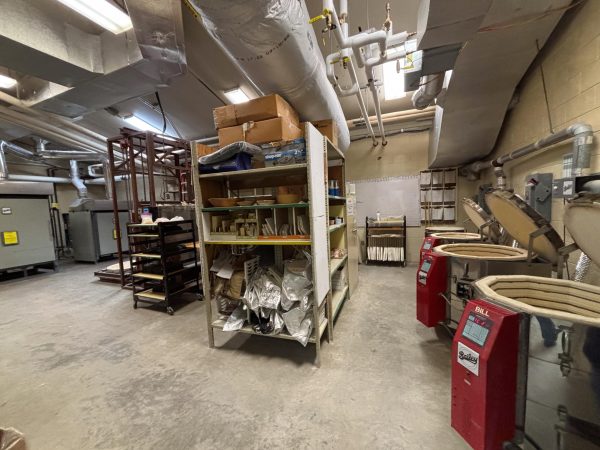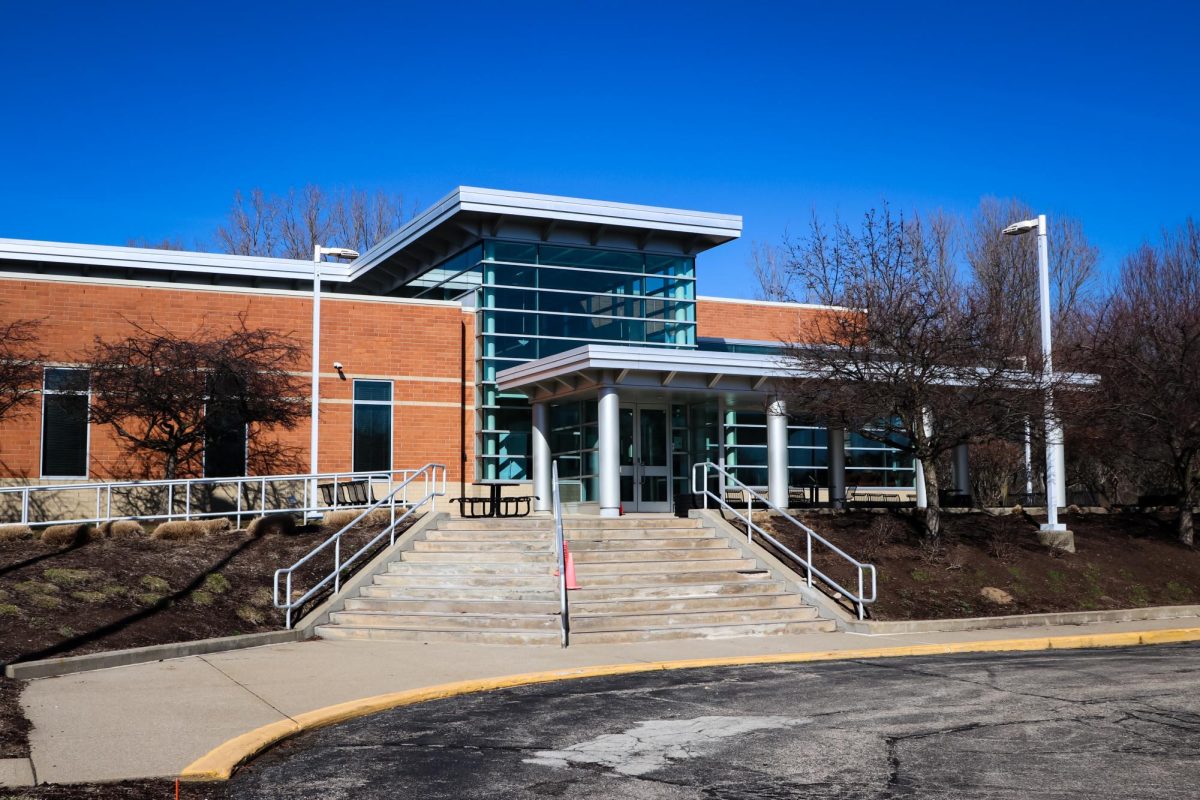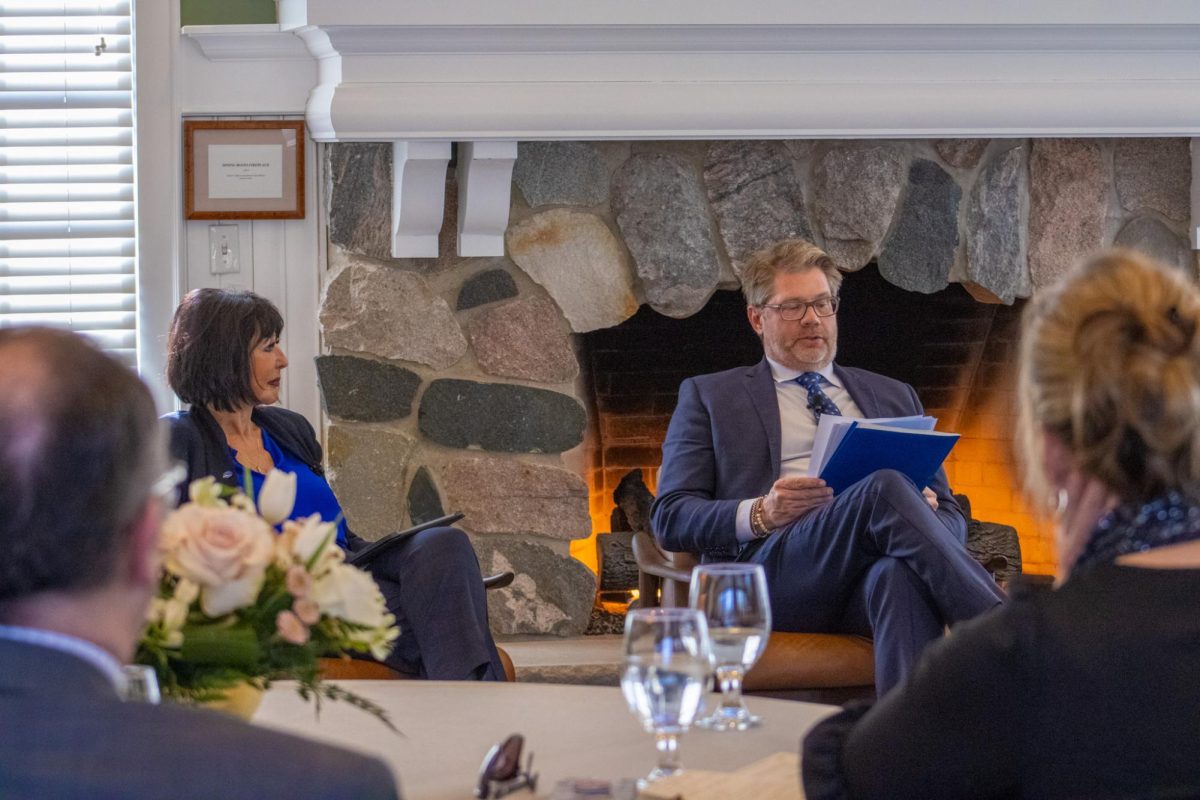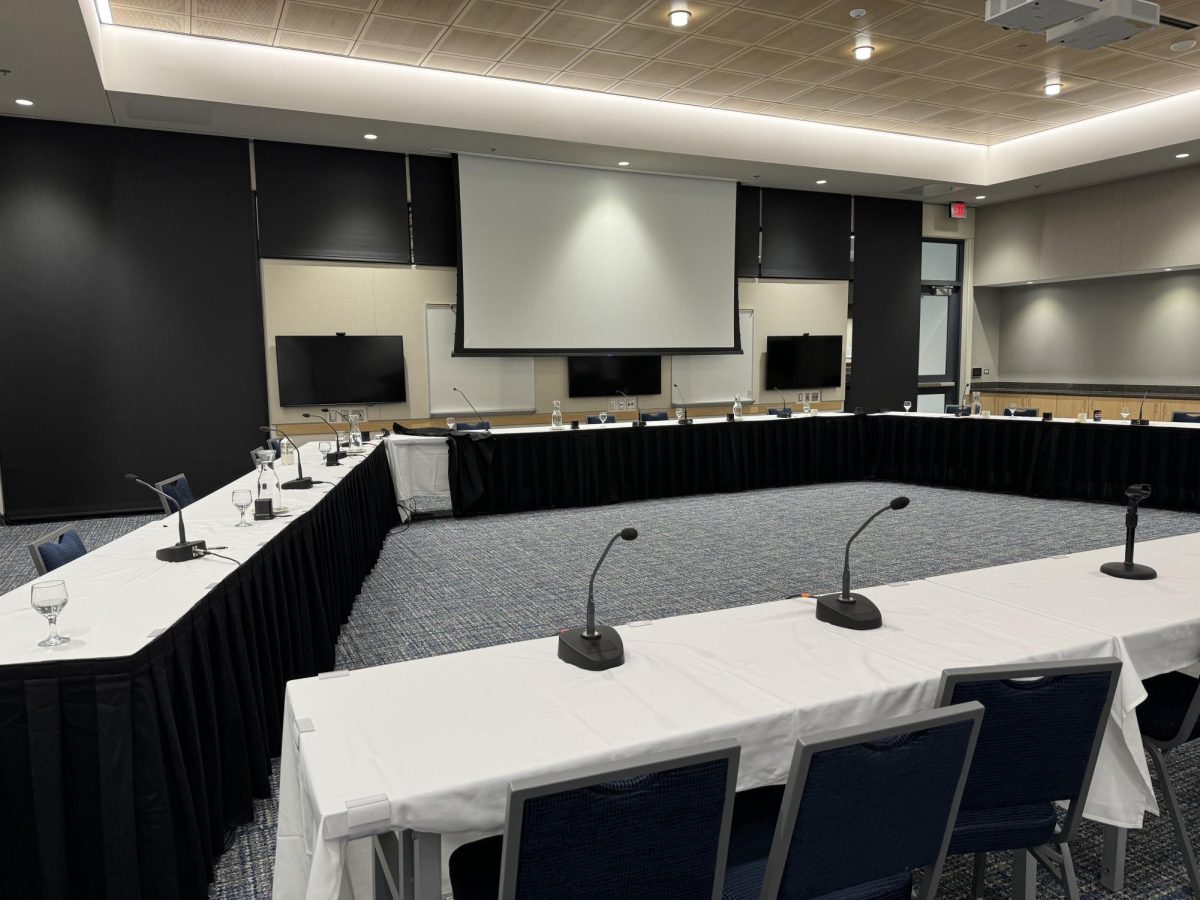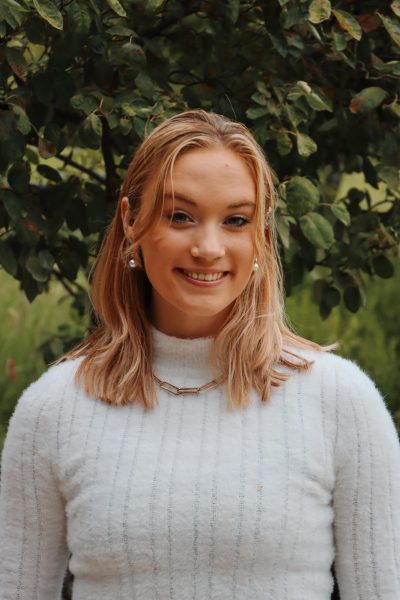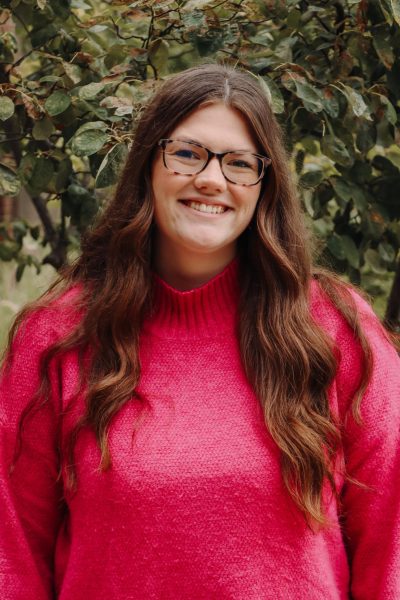A quiet calm falls over the studio as students peacefully talk amongst themselves while spinning, sculpting and glazing their ceramic creations. However, the peaceful focus that many students find through ceramics is becoming harder and harder to spin.
Large academic departments often share facilities, but at Grand Valley State University it seems the Department of Visual & Media Arts (VMA) is competing for space. The ceramics program at GVSU is navigating several issues after a portion of its allocated studio space was cut to make room for demands within other areas of VMA, lack of accommodations and long-term effects of a university department merger in 2018.
In 2018 the arts and design department, including ceramics, merged with film and photography, creating the Department of Visual Media Arts. This made it so that decisions around studio space could be moved around between these programs. They now have to operate under one common administrative group within the College of Liberal Arts and Sciences (CLAS), share facilities and share an overarching budget.
The impacts of how the VMA resources are used are felt by VMA students, primarily individuals in the ceramics program, through lesser quality of space, more difficult experiences and a “stretched thin” resident professor taking on multiple roles. These effects seem to be exasperated by high enrollment, fewer resources and communication issues.
Within the last year, the ceramics studio housed in the Alexander Calder Art Center building on GVSU’s Allendale campus, was nearly cut in half to build an additional classroom for the Film and Video Production program. According to VMA Department Chair Paul Wittenbraker, the university took a portion of the ceramics studio to create a “state-of-the-art” studio space now used by Photography and Film/Video Production classes. When Calder Art Center was constructed, the original ceramics area was meant to accommodate 40 students. Currently, there are around 315 studio art majors, roughly 70 of which are ceramics majors.
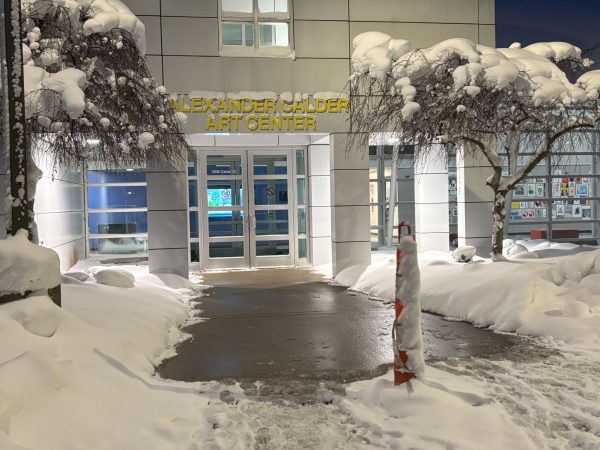
The portion of the ceramics studio that was lost previously held storage for student projects, additional sink locations and personal student workspaces within walking distance of the kiln (a necessary tool to cure pottery). To remedy the workshops lost, GVSU administration placed ceramics students in a communal workshop shared with Jewelry/Metalsmithing and other studio art programs. The relocated workshop, however, does not have proper ventilation to safely support some student projects or an adequate drainage system for pottery. The communal workshop is also three hallways away from the kiln, which is a long walk for students carrying delicate and sometimes very heavy ceramic materials.
“It was determined that the Photo and Film video courses using (Kirkhof studio) needed to be rehoused,” Whittenbraker said. “Renovating the Ceramics studio to accommodate this was determined by the (GVSU) administration to be the best solution.”
There are conversations around the university’s “solutions” to solve student overflow issues in GVSU’s Film and Video Production (FVP) courses by sharing the original ceramics space. Ceramics Program Coordinator and Associate Professor Hoon Lee said he is concerned about the room adaptations, namely concern for the small drain trap, distance from the kiln and proper ventilation in the student studios.
“The biggest challenge is, actually, (students) have to move all their pieces back and forth (from the student workshops to the kiln),” Lee said. “From the (workshop) space it’s not that far, but still they have to move their fragile pieces from the workshop space to the ceramics studio (when students’ pieces) need to get fired and glazed and other things, so that’s the kind of interesting challenge we have to face right now.”
Lee said the relocated workshops lack ventilation to provide a safe environment for students working with a certain kind of clay while it’s dry. This means if students are working with silica clay, they must do the entire project while the clay is wet. However, the relocated student workshops don’t have the same size sinks or drain traps to accommodate working more frequently with wet clay.
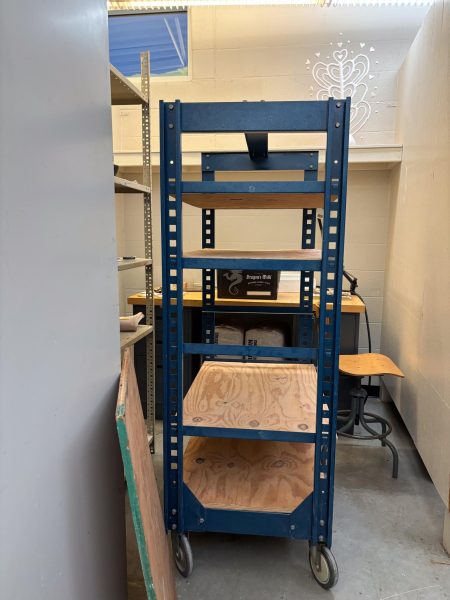
The communal workshop’s sink is part of a small kitchenette with a microwave. It was designed for students who spend long hours in the space, not meant to be used for up to five people’s large-scale clay sculpting. According to Lee, students are transporting up to 150 lbs of wet clay on a wheeled cart back and forth from the workshop to the studio because there aren’t proper vents in the room to safely work.
However, Whittenbraker assures students the ceramics site is perfectly safe because GVSU recently completed a site visit with the National Association of Schools of Art and Design (NASAD). NASAD is the organization that determines accreditation for schools that meet safety, curriculum, finances and faculty standards as well as shows adequate support from the university.
According to Lee, faculty were unable to weigh in on the decision for the room’s purpose, and the students, subsequently, didn’t have a choice either.
“It’s not about film and video, (it’s not) their fault, taking the ceramics studio,” Lee said. “It’s like, why do I have to fight with colleagues about studios? The film and video, photography, are they happy? No, that space is too small for them already.”
Lee said he was told that the university cannot build a new facility to accommodate film/video programs, and was told the only option was to use a pre-existing building on university grounds. When Lee asked “university administrators” if the changes to the ceramics studio would be reversible, he was told, “straight answer ‘No, that’s it.’ We’re gonna continue this way.”
“That’s why I’m not happy about it, and the Film/Video faculty is not happy about it, the Photography faculty is not happy about it, you know, so nobody’s winning at this point,” Lee said. “I feel bad for the film and video photography students if somehow, they think they did something wrong. Still at least, my ceramics students, they’re doing great. Even though it is a small space, they’re sharing and they are working pretty good so I’m happy about that, and I’m proud of them.”
Some students feared the change of ceramics space was indicative of budget or enrollment issues within the program. Once students understood what was happening, rumors circulated about the welfare of the program.
VMA students have an understanding of how studio space can influence artists’ experiences.
“I feel like the space you do your work in is crucial- just having that consistent and familiar area designated for focusing on projects is a must for me, and many others I know,” said Joslyn Hatcher, sophomore Art Education major. “I had heard about the downsizing of the ceramics studio last year, and I was very disheartened by this considering I had decided to go to GV for art after taking ceramics in high school and finding a passion for it. I never saw the studio before the reallocation, so in a way, I don’t really know what I missed out on, but I do have a lingering sadness for what could have been.”

Students worried the current conditions could indicate issues in the longevity of the program. Whittenbraker argues that the ceramics program is “well-supported” and “well-received” on campus.
“There is no connection between the space changes and department budgets. VMA is part of the College of Liberal Arts and Sciences and is well supported by the College through regular budget allocations,” Whittenbraker said. “Ceramics is an essential part of our Studio Art Major. In these projects, it is important to consider everything at this stage to find the best solutions.”
As GVSU continues to grow, several conflicts have arisen regarding support and accommodations for the influx of students. This became clear in early 2023 when the Lanthorn reported on-campus housing overflow following the largest freshman class in the university’s history. Many are questioning if there is simply not enough space or resources for the amount of students the university admitted.
Advanced art students have expressed that they want to take additional ceramics classes, complete independent study projects, or develop advanced technical work within ceramics. Unfortunately, as coordinator and the primary professor in the program, Lee is the only person able to support these kinds of classes. Due to studio capacity, lack of support staff and multiple sections of courses full of students, Lee has to turn down students’ requests to take popular classes or do additional coursework because there is simply not a realistic way to make it happen.
“There used to be a full-time technician position slash instructor (who could) cover ceramics for all different things,” Lee said. “All the sudden the school got rid of that full-time technician position, which means I have to deal with everything and then we have to cancel classes because we don’t have any person to teach any extra.”
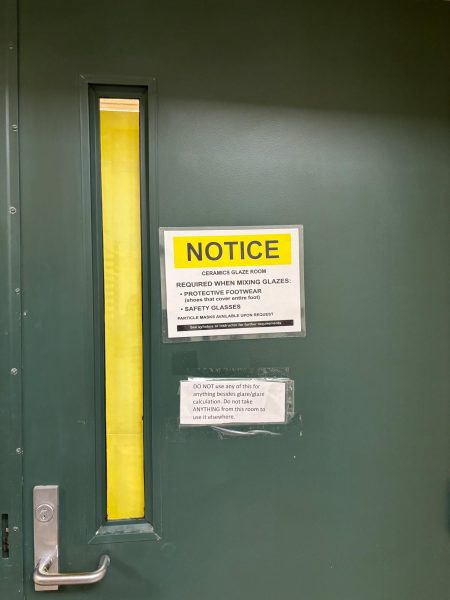
Lee is the only resident professor, associate professor and area coordinator, causing him to split his attention among many duties. He was able to convince the current part-time ceramics technician, Evan D’Orazio to become an adjunct and cover one class, but the rest of the curriculum is left entirely up to Lee to cover.
“There are some other things faculty does, you know, either assistant chair positions or gallery director positions, but in my case I don’t even have a choice or opportunity because if I don’t teach class then we don’t have any other faculty members who can cover ceramics classes,” Lee said. “But in any other areas there will be at least two or more faculty members that can cover (classes). No, I’m the only one no matter what.”
In response to the issue of studio space, a handful of students advocated for the ceramics program and the space it requires at a VMA department meeting. The students argued for a new course of action.
Mary Lamson-Burke, a GVSU alum, is a studio art graduate in the class of 1997 and now works in art education in local school systems. She said facing adversity in the arts will only push students to learn about advocacy.
“It looks like you (students) have a learning opportunity to go and advocate for yourself through intelligent discourse, and make your voice known so that others will listen,” Lamson-Burke said. “That is the practice of being a visual artist, we use many modes of communication, not only our artwork. Here is a real-world opportunity for those students to do that.”
Lee said he hopes the CLAS administration considers students in every decision. Lee said students, who experience administrative changes first-hand, should voice their opinions and be recognized more by the University.
“That’s why I keep telling students, ‘you need to speak up,’” Lee said. “Me, I am just one faculty (member) so even though I say things, they’re not gonna listen to me, but they better listen to the student when students say something, otherwise, there’s a big problem.”
Whittenbraker said VMA aims to create open conversations between administration, faculty and students.
“It is important to all of us as educators to be transparent about the institutional and political workings of a department so students can learn how administrative considerations intertwine with cultural operations,” Whittenbraker said. “We are a tight community in VMA so I hope (students) feel they can continue to be in dialogue with department and college leaders as questions arise.”
The current issue surrounding the ceramics program under the umbrellas of VMA resource allocation is apparent, through the perspectives of faculty and students. The administration’s decision-making around programs continues to be a topic to be navigated.
